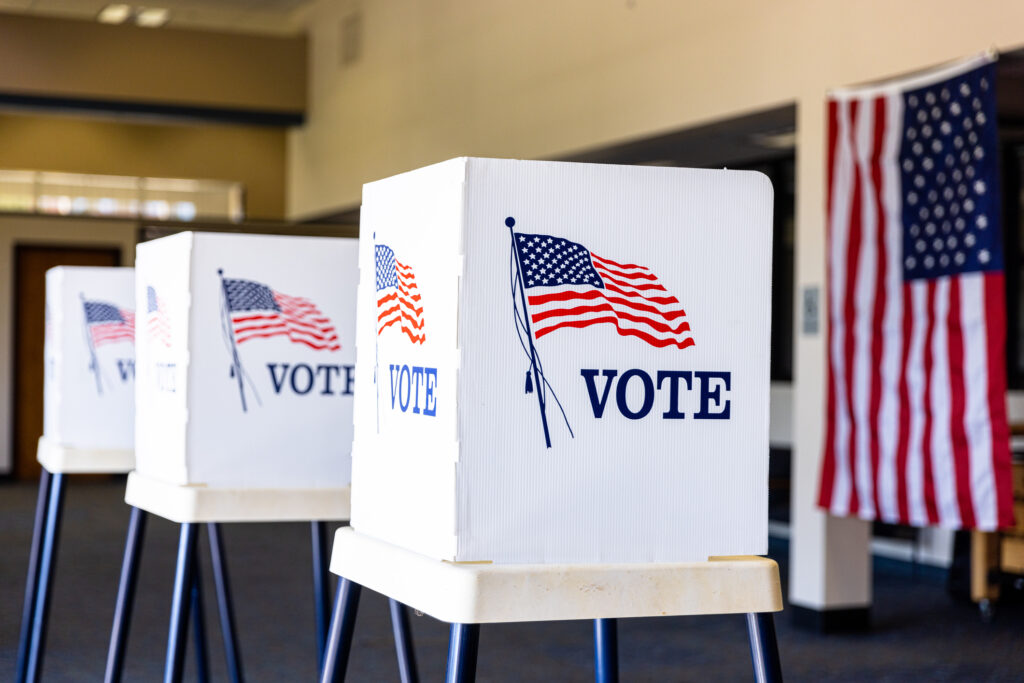The First Five Things To Know About: A New Poll Showing Ohio Voter Support For Child Care Funding

In July 2023, Public Opinion Strategies completed a poll on behalf of the First Five Years Fund, examining Ohio voters’ attitudes toward the issue of child care and early childhood education programs. The poll surveyed a national audience as well as voters in Alabama, Arizona, Montana, Nevada, Pennsylvania, and West Virginia.
The Bottom Line: The vast majority of Ohio voters continue to feel a sense of urgency around the need for affordable, quality child care. This concern cuts across party lines and spans state borders. It is felt strongly by parents and non-parents alike. As a result, even among concerns about the federal deficit, there continues to be persistent, substantial voter support for increased federal funding for child care and early learning programs.
Here are the First Five Things To Know about voter support for federal funding for child care in Ohio:

The vast majority of Ohio voters believe it is important for working parents of young children to be able to find and afford quality child care programs. Fully 93% of Ohio voters believe it is important for working parents of young children to be able to find and afford quality child care programs. Not only do 93% believe this is important, but fully 57% say it is extremely important, and the overall sentiment clearly cuts across party lines, with 88% of Republicans, 97% of Independents, and 95% of Democrats saying finding quality child care programs for children or working parents is important.

Ohio voters believe federal funding for child care and early learning programs should be increased. Even after acknowledging concerns about the federal deficit, 74% of Ohio voters say they still believe that “increasing funding for child care and early childhood education programs is an important priority and a good use of tax dollars.” Again, this sentiment cuts across party lines, with 66% of Republican voters, 73% of Independent voters and 86% of Democratic voters agreeing on the issue.

Ohio voters believe that resources directed to child care and early learning programs benefit not just the family, but the overall community. Nearly six out of ten Ohio voters (58%) say that resources directed to child care and early learning programs benefit both the individual family/children and the overall community, while 16% say the resources only benefit the community and 18% say they only benefit the individual family.

There is broad support for each of five child care policy proposals tested. Ohio voters provide clear bipartisan support to each of five child care reform policies proposed. Each proposal wins easily across gender and generational lines, as well as across both ideological and partisan lines. In fact, even ’24 Trump voters provide at least 75% support for each of the five policies tested. These include:
- Providing tax incentives to businesses which provide or help their employees find and afford quality early childhood education programs – 84% support (including 80% of Republicans and 88% of Democrats)
- Providing greater funding to Head Start and Early Head Start to support families with the greatest needs. – 81% support (including 72% of Republicans and 94% of Democrats)
- Increasing the federal funding to states to expand current programs that directly help low-income children (also known as the Child Care & Development Block Grant, or CCDBG) – 79% support (including 65% of Republicans and 92% of Democrats)
- Increasing the tax credit specifically designed to help working parents offset the cost of child care (also known as the Child and Dependent Care Tax Credit, or CDCTC) – 78% support (Including 70% of Republicans and 85% of Democrats)
- Increasing the Child Tax Credit, a tax benefit for families with children which can be used on any household expense – 77% support (including 72% of Republicans and 87% of Democrats)

One reason for such strong and broad support – voters recognize the impact that child care can have on a family’s household economy. Previous polling has shown that business owners and voters feel strongly that child care is important for the local and national economy. In this poll, we see it also hits even closer to home. More than one-quarter (28%) of Ohio voters polled said they or a family member had to miss work because of child care issues, while 17% of all Ohio workers say they have missed or cut back on work because of child care issues. Finally, nearly 60% of non full time working parents say they would go back to work full-time if their child had access to quality child care at a reasonable cost.
In Their Own Words
Nearly 80% of voters support increasing federal funding for states to expand their child care programs, (also known as the Child Care & Development Block Grant, or CCDBG), including 66% of Republicans, 81% of Independents, and 91% of Democrats.
Here’s what they had to say:
- “Parents need to work, children need to be taken care of while they are working. Making it accessible for families can benefit both families and the economy.” – Lean GOP, Female, Youngstown
- “It not only helps the family be able to afford [child care] but it also gives the children a chance to have interactions with other children and be able to learn while the parent or parents are able to work and make money for the family to be able to pay bills. It also helps the parent be able to afford their bills.” – IND, Female, Columbus
- “It not only helps the family be able to afford [child care] but it also gives the children a chance to have interactions with other children and be able to learn while the parent or parents are able to work and make money for the family to be able to pay bills. It also helps the parent be able to afford their bills.” – IND, Female, Columbus
Putting It All In Context, From FFYF
Sarah Rittling, Executive Director, First Five Years Fund: “We’ve seen a lot of polling through the years that underscores the importance of child care. What this poll tells us is that, both nationally and in these states, voters expect something to be done about the very real issues that families are facing. Members of Congress are making decisions right now about funding for the coming year, and it’s clear from these results that early care and learning programs are not only popular across the entirety of the political spectrum, but that voters want them prioritized.”
Subscribe to FFYF First Look
Every morning, FFYF reports on the latest child care & early learning news from across the country. Subscribe and take 5 minutes to know what's happening in early childhood education.



